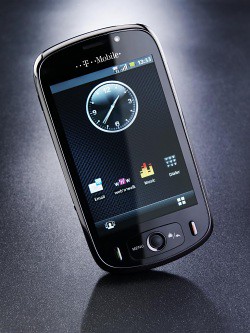T-Mobile Pulse: pay-as-you-go Android

The Android platform for smartphones has come from nowhere to a pretty high-profile position in a very short space of time. Some of the best smartphones around are Android-based. Now T-Mobile has upped the ante by putting its own-branded Pulse on Pay As You Go.
The handset costs £180. On top of that you need to spend £5 a month for unlimited Internet access (with a 1GB fair use policy).
The Pulse is a fairly large handset (135mm x 63mm x 136mm, and 130g). Its black plastic fascia attracts fingerprints. It has a large screen at 3.5-inches, but the resolution of 480 by 320 pixels is not that high for a modern smartphone.

GPS, Wi-Fi, Bluetooth, an accelerometer and HSDPA are all present, marking the Pulse out as quite well specified. You get a month’s trial of the TeleNav navigation software. There's a pretty mediocre 3.2-megapixel camera that suffers from the lack of a flash.
The trackball sported by Android-based handsets is here, and it is partnered by a pair of buttons, one of which takes you to the main menu while the other doubles home and back functions. The Call and End buttons sit outside these controls.
Android has had a visual makeover that includes highlights such as the contacts list sitting in a horizontally scrolling carousel of mugshots, but for us it isn’t as nice-looking as the user interface on the HTC Hero. The Pulse has three home screens, between which you pan with a finger, where the Hero offers seven. An innovation is Wildcard Widgets — larger, more interactive widgets than the standard Android offerings.
The list of built-in applications isn't lengthy — there are no Facebook or Twitter tools preinstalled, for example. But Android Market is on board, so you can download new applications to the handset. It supports microSD cards, and a 2GB card comes with the device.
One real negative is the 2.5mm headset connector, but at least the Pulse comes with a cabled converter to 3.5mm.
It isn’t the flashiest or most exciting of the Android handsets, but the Pulse opens up the platform to those who prefer a pay-as-you-go approach to mobile telephony.
Sandra Vogel